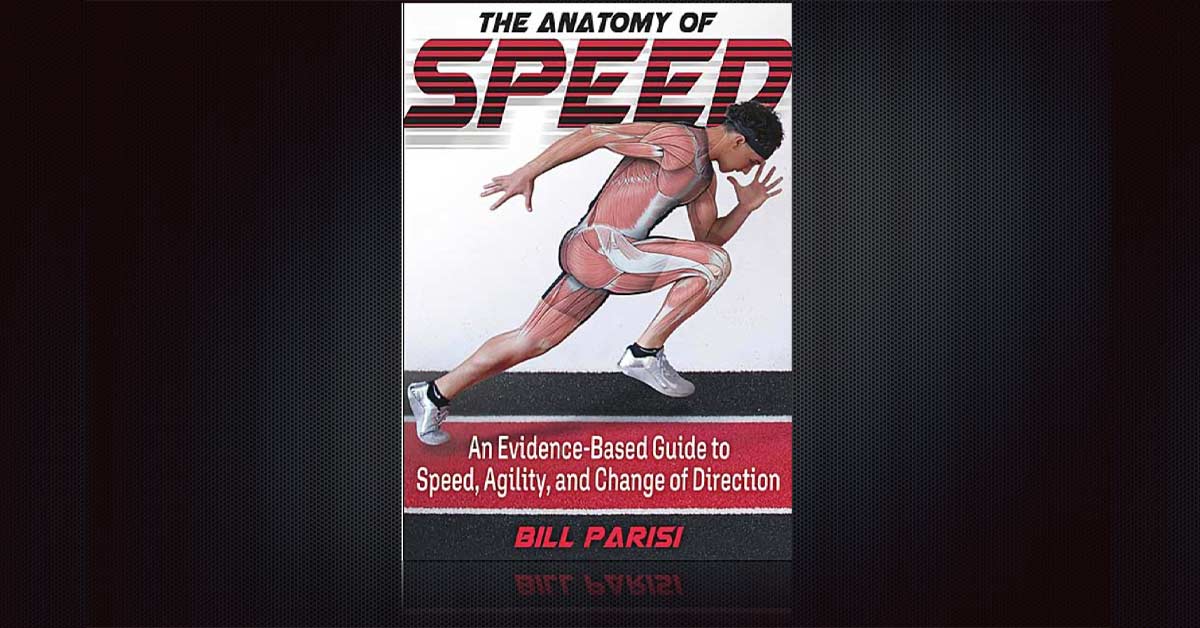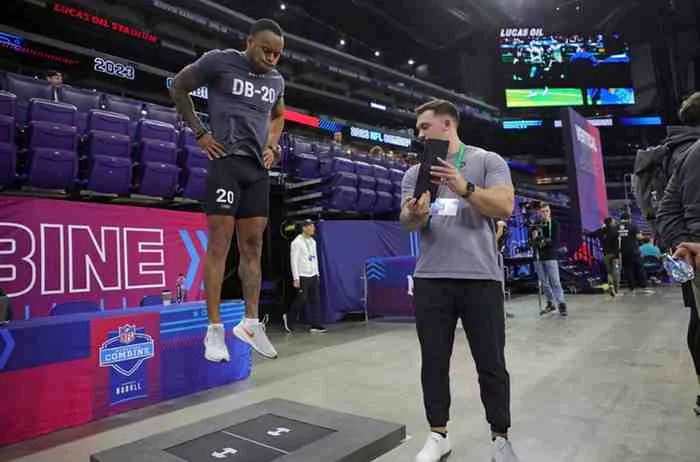Even though the skill of sprinting is one of the most common skills performed by athletes in competition, the lack of knowledge on how to coach it is pervasive. While many books have been written on the biomechanical mechanisms in play during sprinting and others containing drills that coaches can apply to increase speed in athletes, few take the approach Bill Parisi pursues in The Anatomy of Speed.
Parisi includes only what is necessary from an anatomical and biological perspective and combines it with 30 years of practical speed training experience to break down the barriers of entry for speed coaches desiring to learn the nuances of developing speed in their athletes. Considering this level of experience, along with excerpts from leading researchers in the field of kinesiology and sports science, The Anatomy of Speed should be a prerequisite read for any coach who wants to learn how to develop athletes with game-breaking speed.
Overview
With “anatomy” in the title, the reader might expect a dry, textbook-like reading experience. Parisi, however, is able to convey the fundamentals of anatomy and physiology as they pertain to sprinting in an engaging manner that is accessible to the average reader. While Chapter 2 focuses exclusively on the anatomical qualities needed for sprinting, the rest of the book is highly informative on the process of speed development without getting too far into the weeds of biology.
Moving on from Chapter 2 (titled “Systems of Speed”), Parisi then takes the reader through 10 chapters of practical and evidence-based strategies that can be implemented immediately into any speed development program. He takes a linear approach by starting these next 10 chapters with one on the pre-warm-up and injury prevention strategies in a sprinting training session. These topics are fitting to start with, as they should be some of the first steps taken when creating and implementing a speed development program.
If they follow ‘The Anatomy of Speed’ chapter by chapter, a new coach will have a successful speed training protocol at their fingertips, says @DillonMartinez. Share on XWhile Parisi goes about informing the reader on the characteristics of the pre-warm-up and its importance in injury prevention, he also models how much value we should place on the topic by its location in the book. He continues this linear approach throughout, deliberately giving the reader a training template to follow and a progression on how to teach the skill of sprinting. If followed chapter by chapter, a new coach will have a successful training protocol at their fingertips.
The Anatomy of Speed aims to peel back the layers of speed development for athletes by looking at speed in three easy-to-comprehend parts:
- How speed is generated.
- How speed is exhibited.
- How a coach can better develop speed.
Each chapter is comprised of a few pages explaining that chapter topic’s importance as it pertains to speed development in both a scientific and anecdotal way. Then, the author includes practical application ideas for the covered topic, with pictures and diagrams of how to teach those ideas to an athlete during a speed session, before moving on to the next chapter. This approach to writing about the topic makes reading entertaining and meaningful, as the reader gleans research-backed methodologies to speed development, personal stories, ideas from a coach with over 30 years of experience, and visual lessons on applying the content in an authentic setting.
Applications and Ideas for Coaches
Speed is the tide that raises all ships. Many of the goals that a strength or sport coach has for their team surrounding performance can be obtained through the specific goal of making their athletes faster. When the athletes under your charge get faster, they also exhibit an increase in strength, explosion, coordination, agility, and change of direction ability.
There is no other singular metric that, by improving it, can also make a difference in most all other tangible, measurable performance indicators. You can improve cardiovascular endurance through speed training, whereas this is not the same in the inverse. Speed gains are not seen when training specifically for increases in endurance—so those gassers you ran after practice do nothing to make your athletes faster and will only marginally increase endurance. Your athletes will wonder how screaming “fourth quarter” while running at submaximal speeds will make them better athletes.
Instead, using the ideas laid out by Parisi, a coach can create and implement a speed improvement plan that will benefit all athletes in all aspects of their athletic ability. The key will be to convince your athletes that speed is indeed a skill that can be taught and increased. The adage “you can’t teach speed” has been disproved repeatedly by the literature, as well as through my own anecdotal speed coaching experience. Once the athletes choose to believe that they can get faster, it is on the coach to provide the training protocols needed to capitalize on that buy-in.
The adage ‘you can’t teach speed’ has been disproved repeatedly by the literature, as well as through my own anecdotal speed coaching experience, says @DillonMartinez. Share on XThe Anatomy of Speed goes beyond just giving the drills to do; it also includes the “why” behind those drills from an easy-to-understand physiology perspective so that a coach can then create and implement drills with confidence in their effect.
Lastly, a point not made in the book—but one that goes a long way to increase athlete buy-in—is to time everything done in a speed session. Timing and recording all speed reps shows athletes their improvement over time, increases effort in a training session (as they are always trying to decrease their times), and also adds a much-needed element of fun to the training process. You can do this with a stopwatch, but using an electronic timing system such as Freelap or Dashr will prove to be more accurate and efficient for you as the coach, especially when working with large groups of athletes at one time.
Personal Thoughts
Sprinting is a specialized skill that gets viewed as a fundamental skill. This means that when we are taught how to run, many teachers believe that we now also know how to sprint. This is not the case.
As a pre-service physical education teacher educator at Winona State University and a speed coach, I see firsthand the discrepancies between what we teach in the PE curriculum and what we expect our students to be able to do as athletes later in their developmental progression. PE teachers are taught how to teach running using the following critical elements: make sure the arms and legs move in opposition, ensure there is a flight phase between ground contact times, toes pointed forward, and the foot lands heel to toe. But when we look at sprinting as a specialized skill, we see that these are not the critical elements of sprinting.
A methodical approach to teaching and training athletes on the skill of sprinting should be a fundamental ability of all coaches. The Anatomy of Speed does an incredible job of laying the foundation needed to do just that.
Since you’re here…
…we have a small favor to ask. More people are reading SimpliFaster than ever, and each week we bring you compelling content from coaches, sport scientists, and physiotherapists who are devoted to building better athletes. Please take a moment to share the articles on social media, engage the authors with questions and comments below, and link to articles when appropriate if you have a blog or participate on forums of related topics. — SF
References
Parisi, Bill. (2022). The Anatomy of Speed. Human Kinetics, Champaign, IL. $39.95 ISBN: 975-1-14925-9899-2






